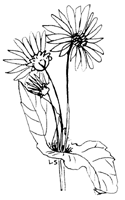Greenacres Links
Landscaping Resources
- Weedlaws
- Toolkit
- Native Vegetation Enhancement
- Wild Ones Handbook
- Homeowners' Resources
- Landscaping Naturally (video)
Remember, we will not post any information intended to directly benefit for-profit enterprises
 Green
Landscaping: Greenacres
Green
Landscaping: Greenacres
Wild Ones Handbook
THE LANDSCAPE THAT WAS, IS, WILL BE
- Prairie Plants Evolved To A Harsh Climate
- Forest Cathedrals
- The Influence of Effluence: Wetter Is Better
- Today's Lawns
- The English Burgher Lawn Aesthetic
- Can Lawns Kill?
- On The Edge of A Sustainable Landscape
|
"You can't turn back the clock, but you can wind it up
again." -
Benjamin Franklin
|
by Pat Armstrong, Prairie Sun Consultants
To appreciate prairie, one must experience and understand the environment that created it. Drive across Interstate 80 in August. Stop somewhere just west of Lincoln, Nebraska, and get out of your car. Climb to the top of the roadway embankment and walk a short distance into the fields. Sun will beat down on you in fiery fury as 140°F heat waves writhe and wriggle dizzily across the land. Desiccating blasts of oven wind will parch your lips and ping your skin with sharp dust arrows. Grass rising, falling, tossing in ocean-like waves will churn your stomach and sway your balance with seasickness. Yet in this unbearably hot and dry environment several hundred beauteous plants thrive and multiply.
Repeat your visit at the end of January. Now howling gales and biting winds sting and numb you with windchill factors of -70°F. There's no place to hide and nothing to block wind or even hold snow as an insulating blanket over soil.
Where are the plants? Roots, rhizomes, bulbs, and growing tips (which is over 60 percent of the plant) are all safely protected in soil away from temperature extremes. Stems and leaves which are above ground make up the smaller, more expendable part of the plant. This is the most important adaptation of plants to a harsh, prairie environment. Four factors shaped the great American prairie that stretched in a rough triangle from Northern Mexico to southern Canada along the eastern side of the Rocky Mountains, narrowing eastward into the prairie peninsula of Illinois, Indiana, and Ohio.
The first was a drier climate that occurred over millions of years as continental plates collided causing the formation of mountain ranges and the breaking away of land masses. Ocean currents and rain patterns changed, the Earth cooled, and inland oceans retreated. By 25 million years ago, the climate in central North America had become dry enough for the first grasses to appear. Twenty million years ago, prairies were well-established.
Prairie plants developed an alternative form of photosynthesis, C4, which allows them to be active at higher temperatures and require much less water. Plants using this system use carbon dioxide more efficiently and have smaller stomatal (pore) openings which cut down water loss.
Other ways prairie plants adapt to climate is with small or finely cut leaves that reduce evaporation. Hairy surfaces help, too, by reducing the air flow, shading the leaf, catching and holding dew or condensing water evaporated through the stomates. Having leaves close to the ground where air flow is reduced and they are shaded by other plants is another way. Having no leaves at all, growing altogether in a clump, having wide-spreading fibrous roots or deep taproots are additional ways.
The second factor was the thick covering of rock and soil debris left by glaciers. Clay particles in this young soil affect its fertility, texture, and ability to hold and release water. Many, like loess (extremely fine wind-blown particles of silt from glacial deposits) are very droughty. Prairies are located almost exactly where there were once glaciers or where glacial debris washed or blew eastward from mountains down into the great plains.
Thirdly, fire is an important factor in prairie development. Being deep-rooted perennials, prairie plants aren't hurt by having their upper parts burned. In fact, if fire is suppressed, they lose vigor and fail to flower. Fire returns nutrients to the soil in the form of ash and reduces the dense overburden of plant debris so shoots can reach sunlight.
Prairie soil is enriched and fertilized not by the decay and decomposition of leaf litter as on the forest floor, but by the death and decomposition of underground parts where the greater percentage of plant material resides. Other beneficial effects of burning are to control invading woody plants and aliens, and to allow sunlight to reach the soil and warm it in the spring so that plants can resume growing sooner.
The fourth factor influencing the development of prairie was the billions of large grazing herbivores. Plants survived by differing strategies. Those with growing points extremely close to the ground could be clipped off on top and keep growing. Other species developed coarse, rough, bristly or thorny surfaces. It is these diverse plant shapes and textures that give them their charm in the garden landscape.
![[logo] US EPA](../gif/logo_epaseal.gif)
